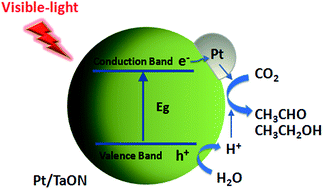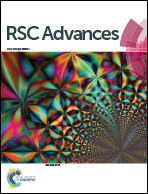Synthesis of single-crystalline, porous TaON microspheres toward visible-light photocatalytic conversion of CO2 into liquid hydrocarbon fuels†
Abstract
Single-crystalline, porous TaON microspheres were prepared for photocatalysis via facile nitridation of uniform amorphous Ta2O5 sphere formed by hydrothermal treatment. The amorphous property facilitates shrinkage of Ta2O5 into the porous TaON nanostructure during the ammonification process. The porous spherical architecture of TaON plays a significant role in deciding the CO2 photocatalytic conversion efficiency into ethanal and ethanol under visible light irradiation, relative to its counterpart from commercial Ta2O5, including availability of more reaction sites, easy trapping of incident illumination, and shortening of charge transfer distance from the interior to the outer surface to expedite charge separation. Loading Pt as an electron sinker over the porous TaON, boosting the separation of the photogenerated electron–hole pairs, not only improves the photoconversion efficiency, but also alters the product species.


 Please wait while we load your content...
Please wait while we load your content...